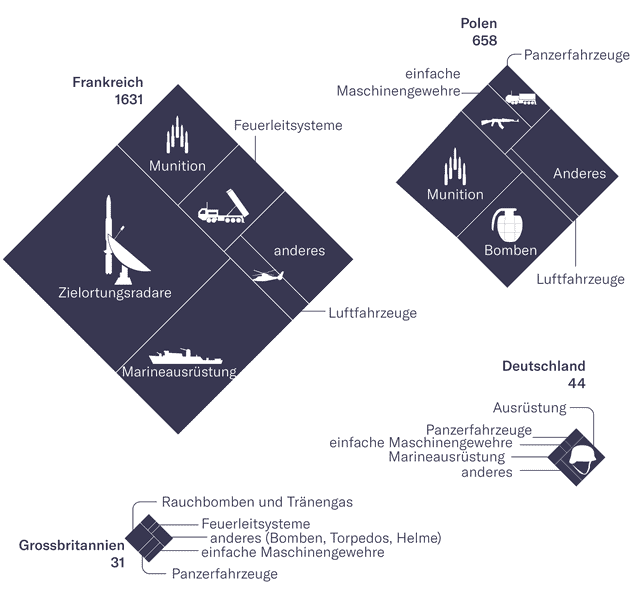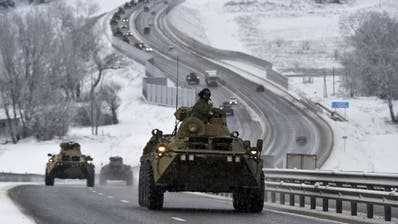illustration Adina Renner / NZZ; photos Dan Kitwood/Getty, Sean Gallup/Getty, AP
Fears of a war in Ukraine are growing. How might a Russian attack go, and what is the West doing? We illuminate the most important backgrounds in graphics.
The relationship between Russia and Ukraine is heavily strained. For centuries, most of today’s Ukraine was under the rule of Moscow. When the Soviet Union collapsed in 1991, Ukraine became independent. From the start, however, Russia found it difficult to respect the Ukrainians’ right to choose their own path. This conflict intensified the more the government in Kiev turned to the West.
With the “Euromaidan” revolution of 2014, a pro-Western government came to power in Kiev. Russia responded by occupying and annexing the Ukrainian, but mostly Russian-speaking peninsula of Crimea. It also fueled an uprising in eastern Ukraine. Since then, military conflicts have taken place there. Now an even bigger war is looming.
The threat
The reason for the current crisis is a Russian troop deployment on the Ukrainian borders. In the recent history of the two countries, this has never happened on this scale – with a presumed number of more than 130,000 men.
Images and videos from social networks play a major role in monitoring Russia’s troop movements. Without these sources, the deployment of the last few months would only have been discovered with a delay. Another important source are satellite images from private providers. Thanks to them, the construction and expansion of Russian military bases can be observed well. Experts can then identify the individual weapon systems – here, for example, at the Yelnya base.
Background: Russia fears for its influence in Eastern Europe
The Russian government emphasizes that it has no warlike intentions against Ukraine. The troop shifts are for training purposes only. However, the Kremlin is using the concerns in the West to make demands: it wants the western defense alliance Nato to stop expanding further east and not station troops in countries that have joined the organization since the mid-1990s.
In several waves of accession since the end of the Soviet era, countries from the former communist Eastern Bloc have joined NATO. Three former republics of the Soviet Union – Lithuania, Latvia and Estonia – have also been part of NATO since 2004. Two other former Soviet republics, Ukraine and Georgia, are knocking on the door in Brussels. Out of consideration for Moscow, NATO has so far refrained from accession talks. But it has expanded military cooperation with the two countries. The Russian government no longer wants to tolerate this either.
Russia has also lost economic influence in Ukraine. This is largely self-inflicted: As a result of the Russian military intervention in Ukraine, the exchange of goods between the two countries fell sharply. At the same time, economic relations with the European Union gained in importance.
Up until 2014, the question of Ukraine joining the European Union and NATO was highly controversial. However, in recent years, joining has become increasingly popular. In one conducted by the Kiev International Institute of Sociology opinion poll by mid-December, nationwide (not including occupied territories), 67 percent were in favor of joining the EU and only 22 percent were against. NATO membership has more than twice as many supporters as opponents.
At the same time, it can be seen that the attachment to Russia and the legacy of the Soviet era is slowly declining. According to surveys, a growing majority of Ukrainians primarily feel connected to the Ukrainian tradition. Around 13 percent of the population still identify with the Russian culture and values of the Soviet era, which roughly corresponds to the proportion of supporters for pro-Russian parties in the country. Since a similar survey in 2006, this proportion has halved. It is traditionally highest in eastern Ukraine, but it has also fallen sharply there.
The Kremlin therefore fears that it will continue to lose influence in its former sphere of influence and is reacting with military muscle flexing.
The West’s dual strategy: sanctions against Russia, support for Ukraine
Already after the illegal annexation of Crimea, the EU and the USA imposed punitive measures against Russia. Now they have announced that they will expand these significantly in the event of an invasion of Ukraine. Painful measures are under discussion that had previously been avoided, including targeted sanctions against important Russian banks and the asset freeze of magnates close to the regime.
A possible exclusion of Russia from the international payment system Swift is considered controversial and sensitive. Because of German resistance, no agreement was reached on whether the Nord Stream 2 pipeline, which had already been completed, should be put into operation in the event of a Russian attack. However, it is becoming increasingly difficult to imagine how the natural gas pipeline from Russia to Germany could start operating in a few months if Moscow were to wage a major war at the same time.
Sanctions are intended to hit Russia in sensitive areas. But Europe is also dependent on Russia, primarily for energy products. Russia is the largest supplier of oil, coal and natural gas to the EU. An import embargo against Russia is therefore not seriously up for discussion.
In addition to the threat of sanctions, the Western dual strategy includes supporting Ukraine with military aid. However, only a small number of countries have decided to send war material to Kiev. It is primarily the USA, Great Britain, the Baltic States and Poland. Then there is France, which was already doing extensive military export deals with Ukraine before the current crisis.
The United States and, to a lesser extent, other Western countries are also supporting Ukraine with military advice and intelligence.
Possible scenarios and how the countries face each other
The recent deliveries of armaments do not change the fact that Ukraine is militarily inferior to Russia. Their armed forces have major weaknesses, particularly in the air force, anti-aircraft and naval sectors. The Ukrainian Navy has particular gaps, because the country lost most of its warships due to the annexation of Crimea and the loss of the ports there.
The graphic below tries to express this imbalance. However, the significance is limited because the weapons are often of different types and Russia has invested much more in modernizing its systems. At the same time, the role of purely defensive weapons, including anti-tank and anti-aircraft missiles, which are not listed here, must be taken into account. Ukraine has received large numbers of such weapons in recent weeks.
Geographically, Ukraine also has a disadvantage: the country is almost encircled. The Russian troops, now estimated to be 130,000 strong, are located on numerous border sections – in Belarus, in Russia itself, in the pro-Russian separatist area in the Donbass, on the occupied Crimean peninsula, off the southern coasts of Ukraine and even in the west, in the breakaway Moldovan region Transnistria.
In the event of a war, Russia could therefore attack the neighboring country from several directions at the same time.
Europe is thus facing the most dangerous crisis since the end of the Cold War more than three decades ago. You can find more background information and the most important new developments in the following article, which is updated daily:





